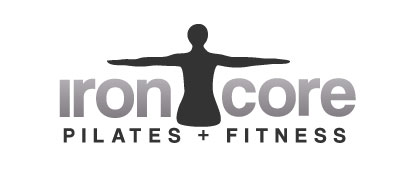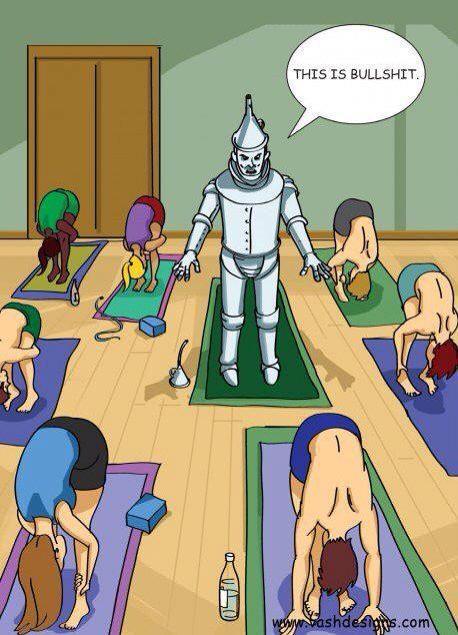My latest weekly blog post for Telegraph CrossFit!
Original blog entry can be found here:

A few weeks back, I discussed the importance of being mobile and stabile in order to be strong. If you have reduced mobility in your ankles, hips, thoracic spine or shoulders, you are never going to maximize your lifting potential! ‘Nuff said!
The next 3 blog entries will focus on each of these areas: ankles, hips, and thoracic spine, starting from the top of the body to the bottom with the thoracic spine this week, and provide tips and more information on how you can be the most mobile person that you can be, helping you in your journey to become the baddest lifter and CrossFitter out there!
Does the above picture of the man hunched over a computer remind you of yourself or how you spend your days? For good or for bad, many of us spend the majority of our waking hours seated at our desks or in front of a computer. The advent of the sedentary lifestyle so common in our modern world nowadays has had a disastrous effect on our ability to remain mobile and supple, and perform at our best athletically. Sitting all day, and the often bad posture that can accompany it, has a huge influence on many factors affecting our athletic performance, and can potentially cause us not to use our bodies efficiently and inhibit our athletic goals.
What does lack of thoracic mobility mean? It basically means not enough mobility in your lats, and often loss of good posture, which can result in the elevation of your shoulders to make up for the lack of motion in your upper back, and can lead to instability in the shoulder complex and resultant shoulder problems and impingement injuries like rotator cuff tendinitis and even tears. Inadequate thoracic mobility can also cause compression and pain in the low back. I am sure that EVERYONE has felt that twinge of shoulder pain when doing a particularly grueling set of banded, strict, or kipping pull-ups due to some upper back tightness.
What happens when you have a tight upper back? Well, it can lead to less than ideal mechanics other places in the body. For example, you might have lateral elbow pain or some sort of deep shoulder pain. While these are usually indications of missing internal rotation at the shoulder, the missing internal rotation may be a manifestation of a tight upper back. Therefore, you can mobilize the shoulder all day, but until you take care of your upper back tightness, the pain will keep coming back!
So, how bad is your upper back mobility? Let’s find out, and then figure out how to fix it!
Mark’s Daily Apple (http://www.marksdailyapple.com) provides a great simple test to assess upper back mobility:
1. Lie down on the floor, back flat against it.
2. Your knees should be up with your feet and glutes (butt) flat on the floor.
3. Lock your elbows and bring your arms directly overhead, attempting to touch your wrists to the ground above your head.
4. Make sure to maintain contact between your lower back and the floor; don’t arch your back to get your hands in place. If you can’t get into this position and touch your wrists to the ground, you have poor thoracic mobility. If you really had to struggle through discomfort or even pain (don’t fight through pain!), you have less than ideal thoracic mobility. And if you were able to breeze through this drill, you should probably still work on more mobility, just to improve what you already possess.
Now that you know how good/bad your upper back mobility is, here are some ideas on how to fix it:
– Work on improving thoracic extension. What’s that? Think about the guy pictured above slumped over his computer attempting to straighten up. That’s thoracic extension! The foam roller and two tennis balls taped together are both awesome tools to work on thoracic extension.
– Work on rotation in side lying and extension and rotation from all fours. Pinwheel and telescope arms are great, simple exercises to do to increase rotation in side lying (both simple Pilates movements, ask for a demo!), or a basic variation of those that you can see here. Cat/camel in all fours and variations of that exercise are effective and simple exercises to do to work on extension, flexion, and rotation from a quadruped position.
– Work on both rotation and lateral flexion of the thoracic spine from a seated position. Many of the seated exercises in our Pilates Mat class work on this. More simple examples can be seen here.
Still unsure of what you need to do to work on improving your upper back mobility and need more exercises or demonstrations? Ask any coach for help!
Following the above assessment and implementing a plan to address your upper back mobility will help you to ensure a long and prosperous CrossFit career, more efficient movement patterns (think awesome pull ups and muscle ups!), and more efficient energy expenditure from your muscles, all with fewer injuries! Stay tuned next week for all you need to know to address your hip mobility.



